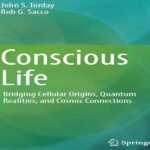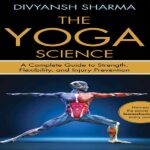- عنوان کتاب: Mesoscopic Nuclear Physics – From Nucleus to Quantum Chaos to Quantum Signal Transmission
- نویسنده: Vladimir Zelevinsky
- حوزه: فیزیک هستهای
- سال انتشار: 2023
- تعداد صفحه: 190
- زبان اصلی: انگلیسی
- نوع فایل: pdf
- حجم فایل: 9.65 مگابایت
در آغاز قرن بیستم، فیزیک هسته ای با کشف یک جسم کوچک با بار مثبت در مرکز هر اتم، هسته آغاز شد. به تدریج، مشخص شد که هسته از نوکلئون ها – پروتون ها و نوترون هایی با بار مثبت و بدون بار الکتریکی تشکیل شده است. این ذرات از طریق نیروهای هستهای قوی، بسیار شبیه به پروتونها و نوترونها، برهمکنش میکنند و اجزای هستهای را در یک حجم به اندازه پنج مرتبه کوچکتر از اندازه اتم تعریفشده توسط ابر الکترونیکی در کنار هم نگه میدارند. بسیاری از هستههای یک عنصر شیمیایی در تغییرات مختلف (ایزوتوپها) زندگی میکنند که با تعداد N نوترونها برای همان بار الکتریکی تعریف شده با عدد Z پروتونها متفاوت است. شیمی عمدتاً توسط الکترون ها و معماری سطح اتمی مولکول ها و کریستال ها تعیین می شود. در چگالی هستهای معمولی، ساختار ذاتی کوارک-گلئون نوکلئونها به صراحت آشکار نمیشود، بنابراین مطالعه آن به شتابدهندههای عظیم یا تکنیکهای آزمایشی بسیار دقیق نیاز دارد. قرن بیستم کاربردهای گسترده ای از فیزیک هسته ای در فناوری صلح آمیز و نظامی نشان داد. برداشت ایزوتوپ های خاص یکی از اهداف اصلی شتاب دهنده های هسته ای جدید است. فراوانی ایزوتوپهای طبیعی در جهان یک عنصر حیاتی برای نظریههای مدرن تکامل جهان است. هسته ها همچنین کلیدهای درک عدم تقارن بار جهان، بسیاری از خواص ذرات بنیادی، برهم کنش ها و فروپاشی آنها را پنهان می کنند.
In the beginning of the 20th century, nuclear physics started with the discovery of a positively charged small object in the center of every atom, the nucleus. Gradually, it was found that the nucleus consists of nucleons — positively charged protons and neutrons with no electric charge. These particles interact through strong nuclear forces, very similar for protons and neutrons, keeping the nuclear constituents together inside a volume by five orders of magnitude smaller than the size of the atom defined by the electronic cloud. Many nuclei of the same chemical element live in various modifications (isotopes) which differ by the number N of neutrons for the same electric charge defined by the number Z of protons. The chemistry is mainly determined by the electrons and the atomic level architecture of molecules and crystals. At typical nuclear density, the intrinsic quark–gluon structure of nucleons is not revealed explicitly so that its study requires huge accelerators or extremely refined experimental techniques. The 20th century demonstrated broad applications of nuclear physics in peaceful and military technology. The harvesting of specific isotopes is one of the main goals of the new nuclear accelerators. The abundance of natural isotopes in the world is a crucial ingredient for modern theories of the evolution of the universe. The nuclei also conceal keys to the understanding of the charge asymmetry of the universe, many properties of elementary particles, their interactions and decays.
این کتاب را میتوانید از لینک زیر بصورت رایگان دانلود کنید:
Download: Mesoscopic Nuclear Physics




































نظرات کاربران